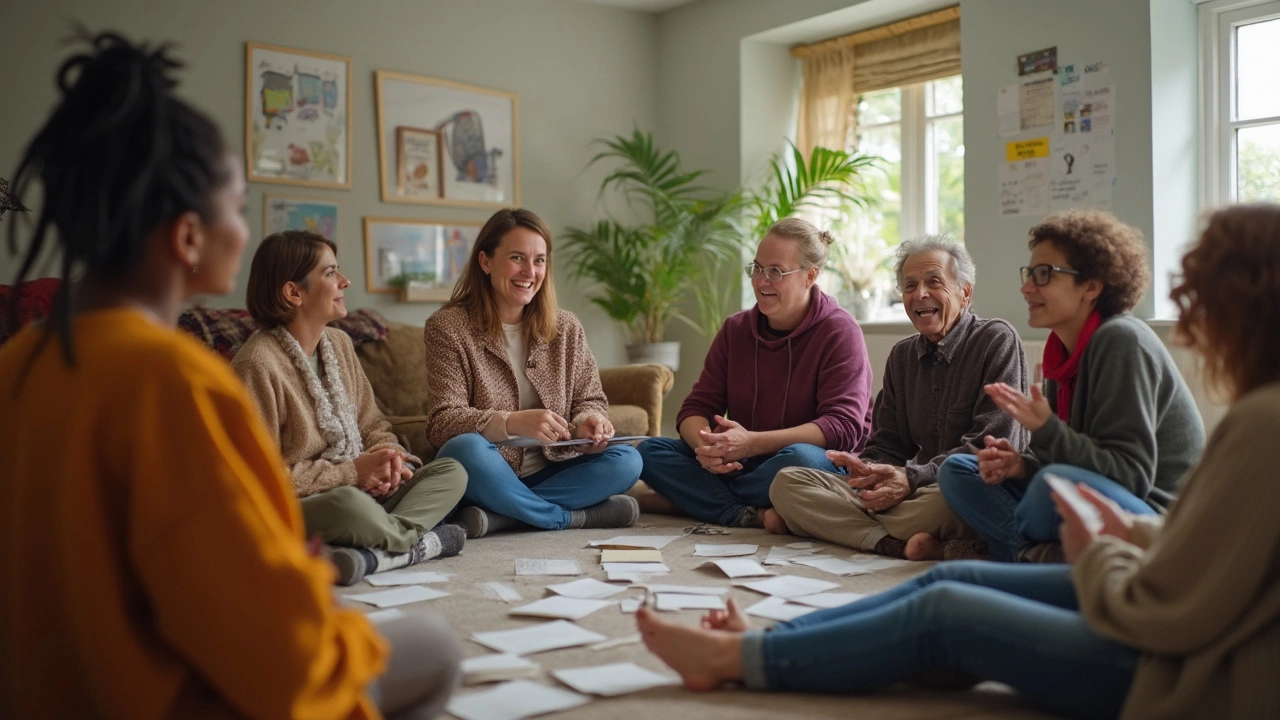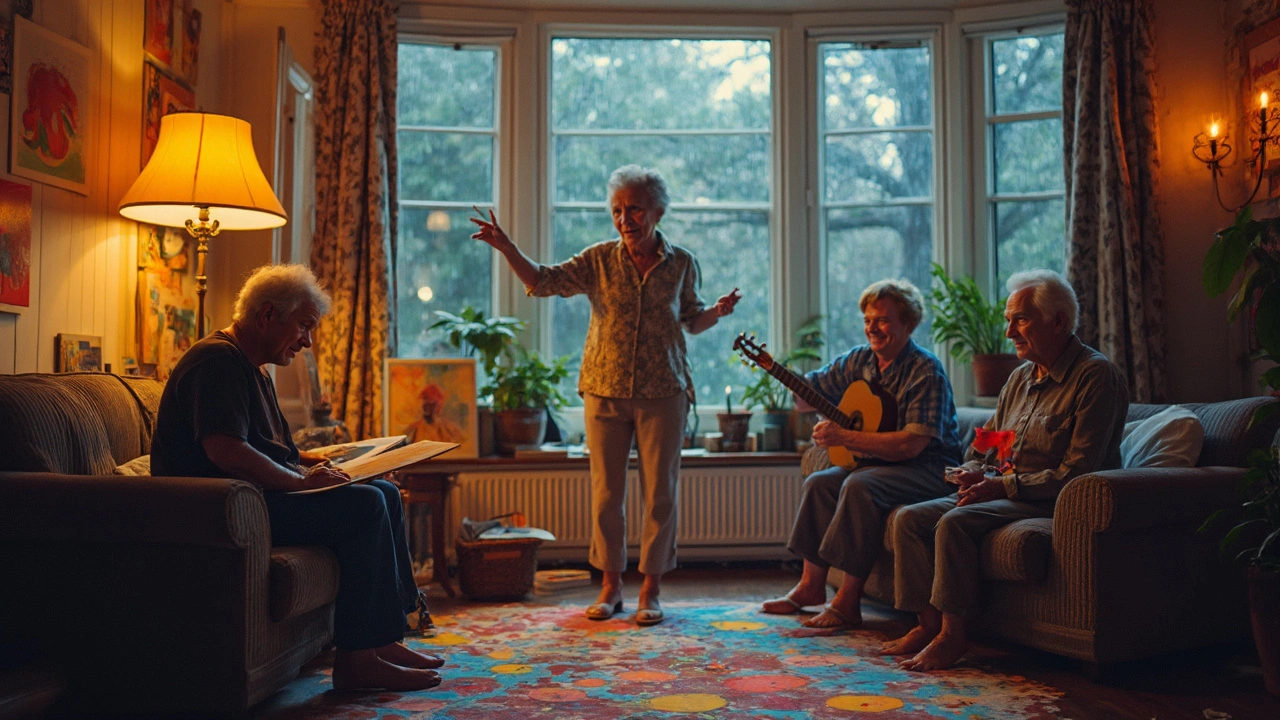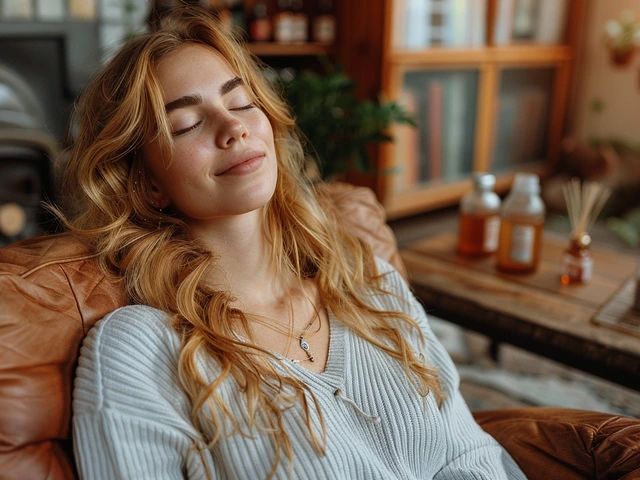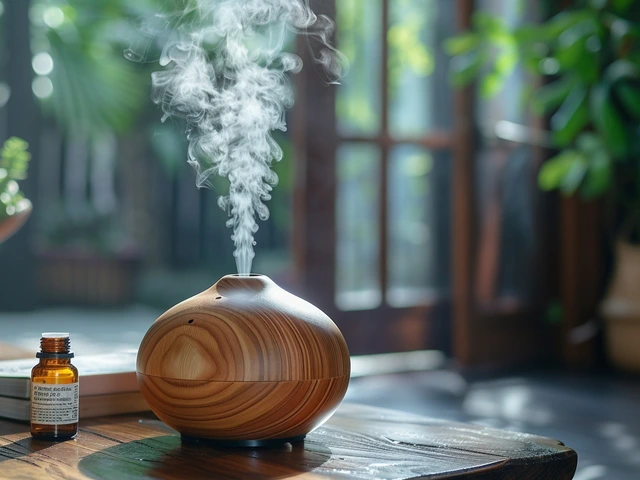Ever felt wound so tight that advice like "just breathe" only makes you roll your eyes? You’re not alone. Here’s the twist: research-backed creative arts therapies—think painting, drumming, dancing, even improv—are showing up as powerful sidekicks for stress relief. You don’t need to be the next Picasso or start a jazz band. These therapies jump straight to what actually helps: getting out of your head and into your body, using simple, creative activities that almost anyone can enjoy.
Take art therapy, for example. It’s not just for kids with crayons—it’s being used with stressed-out professionals, college students, and even military vets. They’re seeing better moods and fewer anxious thoughts after just a few sessions. The key isn’t making good art; it’s about letting your brain switch gears and playing with color, sound, or movement in a way that feels fun, not forced. Think of it as a workout for your mind that doesn’t feel like work.
- How Creative Arts Therapies Actually Work
- Proof It’s Not Just for Artists
- Fact vs. Myth: What Science Really Says
- Easy Ways to Try It Yourself
How Creative Arts Therapies Actually Work
Here’s the thing about creative arts therapies: they’re all about getting your mind to chill out and your nervous system to relax, but without the pressure to “fix” yourself. Doing art, music, dance, or drama in a guided way actually changes how your brain reacts to stress. You’re not just doodling for fun—you’re giving your brain a break from the noise of everyday worries.
What’s really going on? When you get busy with creative tasks, your brain’s fear and worry centers (like the amygdala) slow down, research from Drexel University shows. Meanwhile, activities that use your hands or voice send calming signals to your body. Therapists are trained to guide you so that whatever you make, play, or move becomes a safe space to sort through feelings calmly—or sometimes, just get a little mental holiday.
Different types of creative therapies have their own unique methods:
- Art Therapy: Using paint, clay, or even simple doodling to express things you can’t say out loud. No skill needed, seriously.
- Music Therapy: Listening to, making, or just moving to music. It helps your heartbeat and breathing slow down, which basically tames stress on the spot.
- Dance/Movement Therapy: Using body movement (not a dance class!) to burn off nervous energy and feel more grounded.
- Drama Therapy: Acting out scenes or stories—sometimes silly, sometimes serious—to work through situations that are eating at you.
Check out these numbers showing how these therapies stack up for lowering stress:
| Type of Therapy | % Reporting Less Stress After |
|---|---|
| Art Therapy | 75% |
| Music Therapy | 68% |
| Dance/Movement Therapy | 72% |
| Drama Therapy | 63% |
This isn’t just about talking—sometimes people who hate traditional therapy do better with creative approaches. Turns out, your brain loves having a hands-on way to reset. And it’s way more engaging than sitting still and overthinking everything.
Proof It’s Not Just for Artists
Lots of people steer clear of creative arts therapies because they think, "I can’t draw," or "My singing could scare away the neighbor’s cat." Here’s the real scoop: skill level doesn’t matter—expression does. A big chunk of art therapy clients describe themselves as non-artistic, but that doesn’t stop the process from working. Therapists across the US report breakthroughs with people who haven’t touched a paintbrush since elementary school.
Check out these numbers. A 2023 UK-based study found that 78% of participants who tried music therapy had no musical background, but 6 out of 10 reported a noticeable reduction in stress after four weeks. Another 2022 research project at a Chicago counseling center showed dropout rates were way lower for clients using drama therapy versus those in traditional talk therapy (11% vs. 23%).
| Type of Therapy | % of Non-Artists | Reported Stress Relief |
|---|---|---|
| Music Therapy | 78% | 61% |
| Drama Therapy | 74% | 55% |
| Visual Art Therapy | 85% | 68% |
What’s going on here? Creative therapies aren’t about how good your final product is—they’re about what happens while you’re in the process. That’s why group sessions sometimes ask people to scribble with their non-dominant hand or make noise on a drum even if they’ve never touched one. The pressure disappears because no one’s judging the result.
Here’s another thing: these therapies are just as effective for people with high-pressure jobs, social anxiety, or even those who say "I hate art classes". It’s more about the experience than achievement. Sessions are guided to put you at ease, not to judge talent. In fact, therapists often use prompts that have nothing to do with "making something good"—instead, it's about letting go and exploring a safe space without rules.
If you’ve ever wanted a way to blow off steam without talking it out or running a marathon, creative arts therapies might surprise you. You don’t need talent—just a willingness to try something out of your routine.

Fact vs. Myth: What Science Really Says
Creative arts therapies sound a little too good to be true, right? Here’s what’s real and what’s a myth, backed by actual research. One huge myth is that you have to be "creative" for these therapies to work. In reality, results show it’s more about the process than any artistic skill. For example, a 2022 review in the Journal of the American Art Therapy Association showed regular participation in art therapy dropped anxiety scores by almost 40%—and most participants hadn’t picked up a paintbrush since grade school.
Another fact people miss: these therapies can physically change your stress response. Scientific studies using brain scans found that doing something like music therapy (even if you can’t carry a tune) lowers cortisol, your main stress hormone. Check this out:
| Therapy Type | Main Stress Benefit | Research Source |
|---|---|---|
| Art Therapy | Dropped anxiety and improved mood in adults | JAATA, 2022 |
| Music Therapy | Lowered cortisol by up to 25% | Frontiers in Psychology, 2021 |
| Dance/Movement | Decreased symptoms of depression and stress | BMC Psychology, 2020 |
A lot of people also think these methods are just fill-in activities, kind of like arts and crafts. Actually, creative arts therapists go through rigorous two-year programs (sometimes even more!) and use real psychological frameworks. The American Art Therapy Association and similar groups set strict training rules, so you’re not just gluing macaroni onto cardboard. This is backed by evidence, not wishful thinking.
If you’re skeptical, just know these therapies aren’t for some rare group. They’re helping folks in hospitals, people with PTSD, burned-out nurses, and regular folks just dealing with work stress. The best part? Creative arts therapies often work even when talk therapy hasn’t helped, especially for people who shut down talking about their emotions.
Easy Ways to Try It Yourself
You don’t need a studio, expensive supplies, or a background in psychology to give creative arts therapies a shot. Most activities can be done with things you already have at home, and a lot of people even notice lighter moods and less stress after just one session. It’s all about making things simple and doable—no perfection needed.
- Art Therapy at Home: Grab paper, markers, or whatever you have, and just start. Try doodling how your day felt or use colors to reflect your energy right now. Studies show even 45 minutes of drawing lowers cortisol (the main stress hormone).
- Music Therapy Quick-Start: Create a playlist based on your mood, or bang on a drum, kitchen pot, or just clap along to a song. A 2020 study found that active music-making (not just listening) reduced anxiety by up to 26% in adults who had never done music therapy before.
- Dance (or Move) Therapy: Push your furniture aside and put on music that matches how you feel, then let your body follow. No choreography needed. Even 15 minutes of free movement can bump up dopamine, your brain’s "reward chemical."
- Theater Games Solo: Try saying a silly sentence in ten different voices, or act out a tiny story while looking in the mirror. It may feel goofy, but drama therapy exercises have been shown to improve social confidence and lower stress for people who usually feel anxious in groups.
You might wonder if there’s any real difference between creative arts therapies and just relaxing with hobbies. The big difference? These approaches encourage you to focus on your thoughts, feelings, and even your stress while creating, instead of zoning out or multitasking. That’s what helps your mind process things and feel better after.
| Therapy Type | Time Needed | Reported Benefits |
|---|---|---|
| Art Therapy | 45 minutes | Lower cortisol, improved mood |
| Music Therapy | 30 minutes | Reduced anxiety, energy boost |
| Dance Therapy | 15 minutes | Increased dopamine, stress relief |
| Drama Therapy | 20 minutes | Confidence jump, social ease |
No pressure to share what you make. The goal is to let loose a little and actually check in with yourself. Even my bearded dragon, Marble, seems more chilled out when I'm drawing. Give one of these a whirl—five minutes is a solid start.





